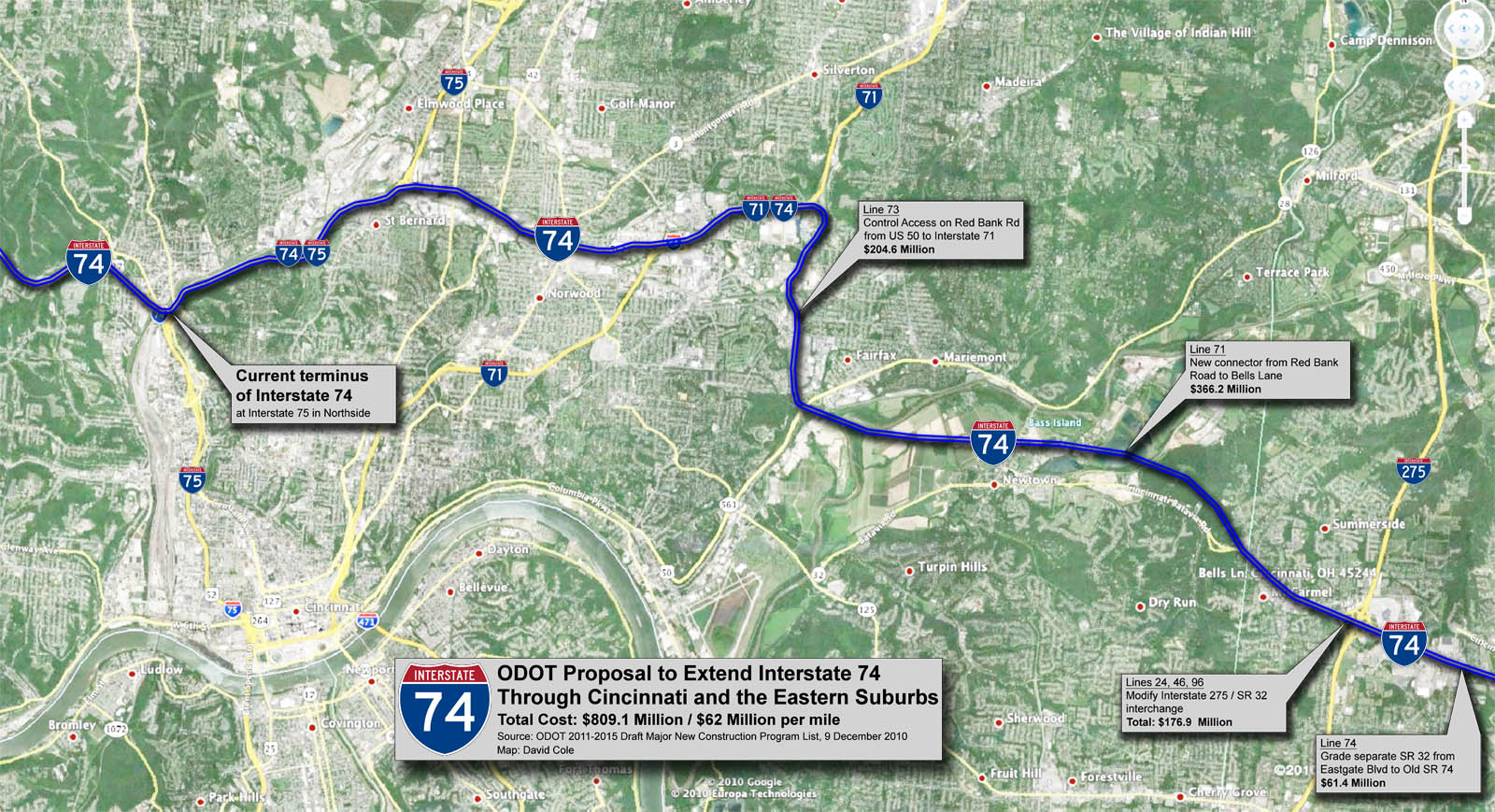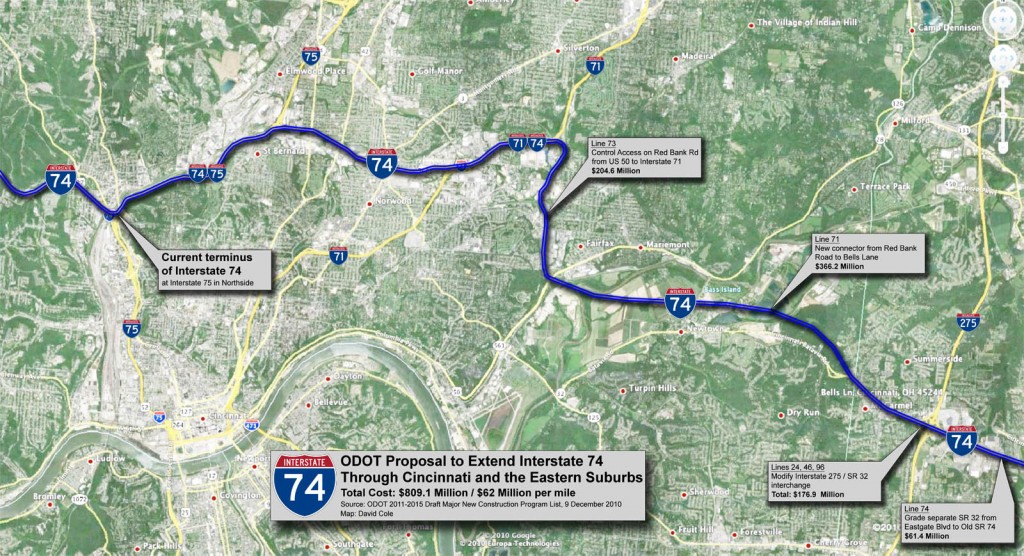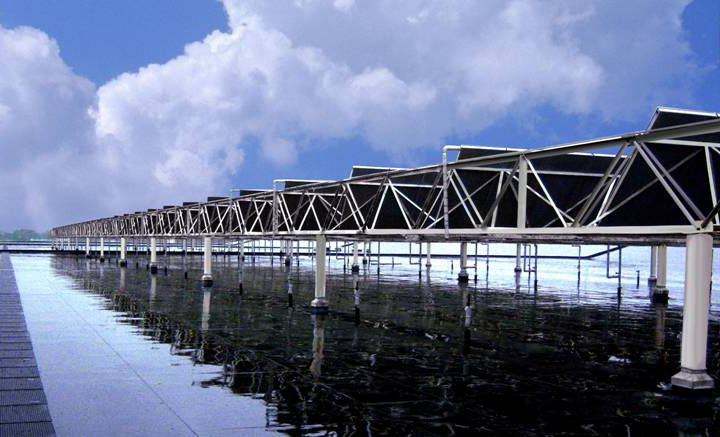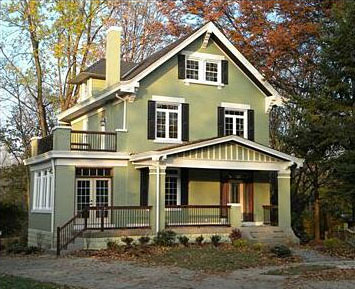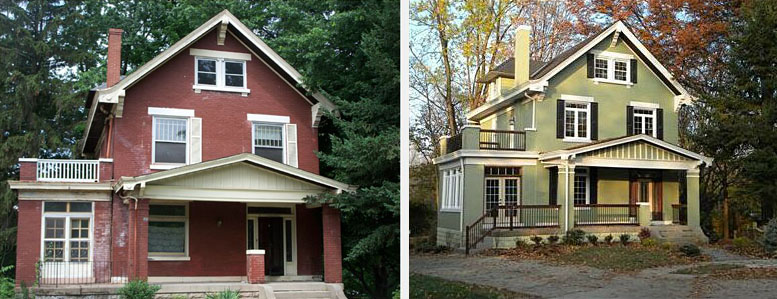The Ohio Department of Transportation (ODOT) published its 2011-2015 Major New Construction Program List on December 9. The list included six funding allocations totaling more than $809 million of expressway work that will set the stage for the long-envisioned extension of I-74 through Cincinnati.
The money is being allocated through the veil of the controversial Eastern Corridor Project. $115 million has been budgeted for reconstruction of the US 32 – I-275 cloverleaf, grade separation of US 32 near this interchange, and modifications to Red Bank Road that anticipate its reconstruction as a fully grade separated expressway. Another $13.8 million has also been budgeted for the long-planned $366 million US 32 bypass and Little Miami River bridge between Red Bank Road and Interstate 275.
This partial funding of all segments of the Eastern Corridor Project on ODOT’s current Program List illustrates that the project is still very much on the table, and that ODOT will likely turn its full attention and funding toward the project after the reconstruction and widening of Interstate 75 is completed later this decade.
I-74 Extension Details
Many have suspected the use of the Eastern Corridor Project was being used as a veil for an interstate project, but until now there has been no financial backing to these claims. The extension of I-74, through Hamilton County, would be realized by upgrading US 32 between I-71 and I-275, and by upgrading other stretches of local expressways to interstate status and giving them the I-74 name. Once the extension is complete, I-74 would run from its current terminus at I-75 in Cincinnati to existing sections of I-74 in North Carolina.
In such a scenario, three miles of I-75 between Northside and Bond Hill would be co-signed as I-74, the entirety of the Norwood Lateral would become I-74, and I-71 between the Lateral and Red Bank Road would be co-signed as I-74. From that point, the planned “Eastern Corridor” US 32 bypass, which is being built to interstate highway design standards, can with the stroke of a pen become I-74.
Critical pieces of such a cross-county plan will soon commence construction as part of the I-75 Millcreek Expressway project. This year, the Millcreek Expressway project will fund $9 million in modifications to the I-74 Colerain Avenue interchange near Mt. Airy Forest. The nearby I-74/75 interchange in Northside, the present site of I-74’s terminus, is scheduled to be completely reconstructed in 2013. The I-75/Norwood Lateral interchange is scheduled to be rebuilt between 2016 and 2018.
Beneficiaries of an I-74 Extension
US 32 between I-275 and eastern Ohio, completed in the late 1990’s, was built to near-interstate specifications in anticipation of its future designation as I-74. In the fifteen years since its completion, it has attracted almost zero development along its more than 200-mile path. It is unlikely that replacement of its at-grade intersections with diamond interchanges will encourage increased private investment.
In the Cincinnati area, the most obvious beneficiaries of the Eastern Corridor plan, aside from those construction companies who would actually build it, are those who control tracts of land in Clermont County, who no doubt wish to develop large-scale sprawl along US 32 outside the I-275 loop. Such a roadway would only marginally improve the area’s access to downtown Cincinnati, and therefore strengthen the position of Kenwood, Blue Ash, and other suburban areas that compete with it for jobs and commerce.
The possible designation of the Norwood Lateral as an interstate would make its reconstruction a priority, and reconfiguration of its ramps could make possible the redevelopment of vacant land in Norwood and Bond Hill. Reconstruction of the I-71/Norwood Lateral interchange could accelerate the redevelopment of the Cincinnati Milacron site.
Potential Impacts
The US 32 bypass will negatively affect property values and the quality-of-life presently enjoyed by those who reside in the Newtown area. Additionally, the Sierra Club has campaigned against the highway’s Little Miami River bridge since the concept was introduced, arguing that its construction will negatively affect the river’s wildlife.
From the 1930’s on through the 1960’s, every mile of the 43,000-mile Interstate Highway System first appeared as a line on somebody’s map. In Cincinnati, remnants of abandoned subway right-of-way gradually became parts of what we know today as I-75, I-71, and the Norwood Lateral. The idea was to spread the population of Cincinnati into suburban areas. Another cross-town freeway in the form of I-74 will further depopulate the core of our region.
